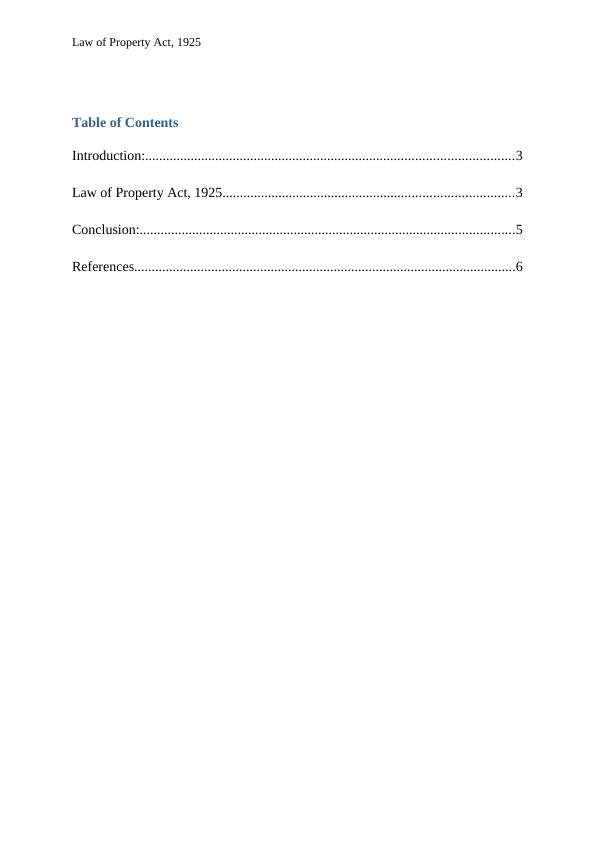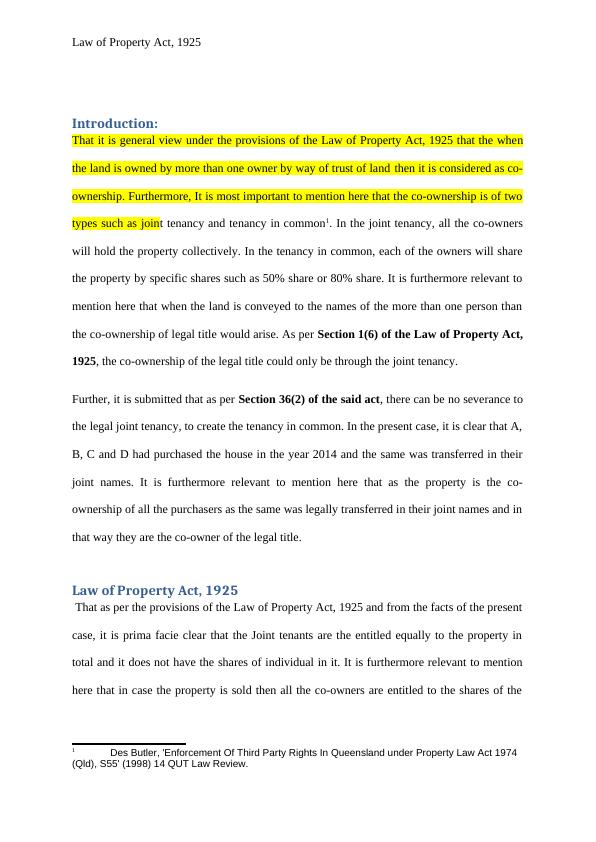Law of Property Act, 1925
Understanding the concept of co-ownership in property law, specifically the differences between equitable joint tenancy and tenancy in common, and the characteristics of each.
6 Pages1299 Words75 Views
Added on 2023-05-30
About This Document
This article discusses the Law of Property Act, 1925 and its provisions on co-ownership, joint tenancy, tenancy in common, and right of survivorship. It also cites relevant case law and provides advice for a hypothetical scenario.
Law of Property Act, 1925
Understanding the concept of co-ownership in property law, specifically the differences between equitable joint tenancy and tenancy in common, and the characteristics of each.
Added on 2023-05-30
ShareRelated Documents
End of preview
Want to access all the pages? Upload your documents or become a member.
Impact on the Legal Estate and Equitable Interests
|8
|3076
|279
Joint Tenancy and Severance of Joint Tenancy in Singapore: A Comparative Analysis
|7
|3679
|377
Legal Issues in Property Law: Case of John Daniel Cummins v Cummins HCA 6 [72], 2006
|8
|2678
|386
Land Law Assignment Solved
|7
|1842
|67
Legal implications of joint tenancy and tenancy in common in Singapore
|7
|2469
|412
Can George be Evicted from the House?
|7
|2352
|223



